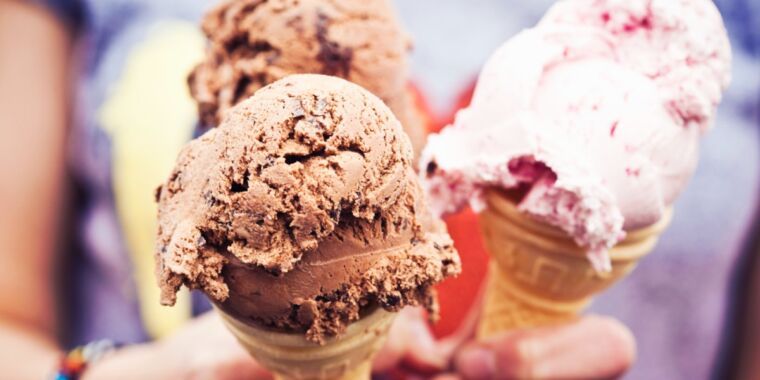
Sally Anscombe/Getty Images
We’ve all made the mistake of leaving a tub of ice cream on the counter for a little too long. Sure, you can refreeze the semi-melted treat, but the texture may be much crispier than deliciously creamy afterwards. The culprit is oversized ice crystals. Scientists at the University of Tennessee think they’ve found a plant-based additive to stop these crystals from forming, and it’s more effective and less expensive than the additives currently used by ice cream makers. The researchers presented their work last week at the American Chemical Society meeting in San Diego.
“Food science is not cooking,” Tao Wu, a food scientist who specializes in carbohydrate chemistry, said at a news conference. “It’s a multidisciplinary field that uses chemistry, biology and engineering to solve real-world problems in food production. For example, we need to use good chemistry knowledge to produce high-quality ice cream.”
The basic science involved in making ice cream is well known. (Physics students have even been known to use liquid nitrogen to make their own ice cream in the lab.) Simply heat milk, cream, and sugar until the sugar dissolves; cool the mixture; and add any flavorings. Then slowly swirl that mixture as it freezes. This adds air to the mixture, inflating the volume (overrun). The best ice creams, including gelato, have an overrun of less than 25 percent compared to cheap commercial ice creams, where the overrun can be as much as 100 percent. That higher excess is the reason why cheap ice creams melt faster and store less well. Finally, pack the soft serve ice cream mixture into containers for the final step in the process (hardening).
All ice cream contains ice crystals, but ideally you want the smallest possible crystals to ensure a creamy rather than crunchy texture. The rapid cooling and churning process generally results in small seed crystals. Problems arise when ice melts and then refreezes — a process called recrystallization. When refrozen ice crystals grow larger than 50 microns, the dessert takes on that unwanted crunchy texture.
To make sure ice cream stays creamy, manufacturers usually add emulsifiers like lecithin and stabilizers like guar gum, locust bean gum, carrageenan and pectin. These stabilizers help the ice retain moisture during storage and slow the growth of ice crystals. “However, these stabilizers are not very effective,” Wu said. “Their performance is affected by many factors, including storage temperature and time, and the composition and concentration of other ingredients. This means that they sometimes work in one product but not another.”
Furthermore, according to Wu, it is not clear exactly how these added ingredients interact and inhibit the recrystallization of ice cream. The focus of this latest research is identifying and testing better alternatives.

